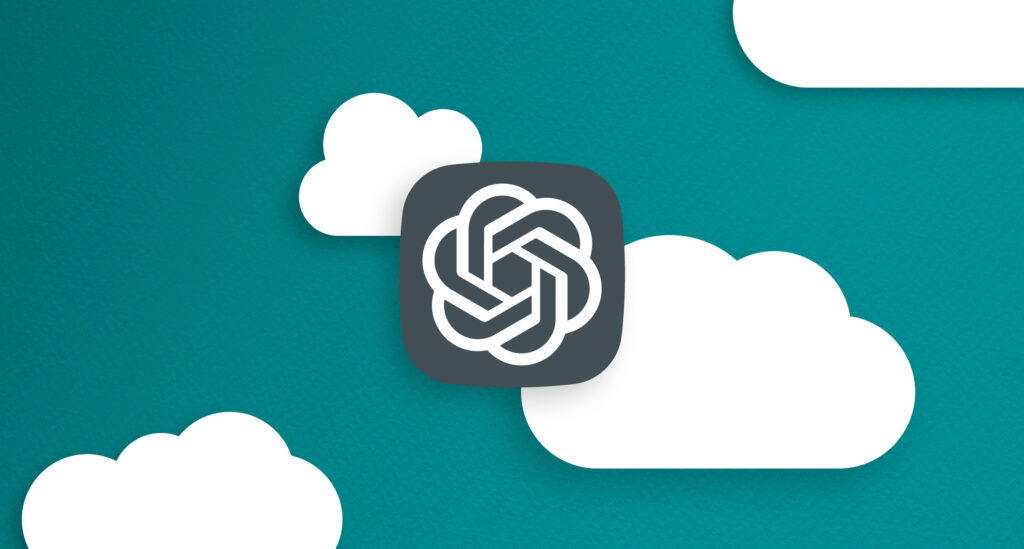Creating intelligent IoT devices with ChatGPT and Arduino Cloud: A journey into natural language interaction

Artificial intelligence (AI) and natural language processing (NLP) are changing the way we interact with technology. With advancements in machine learning and data processing, we now have AI-powered virtual assistants, chatbots, and voice recognition systems that can understand and respond to our queries in a natural, human-like way. One such technology is ChatGPT, a large language model developed by OpenAI based on the GPT-3.5 architecture. ChatGPT has the ability to generate coherent, context-aware responses to a wide range of questions, making it an ideal tool for communication.
Integrating ChatGPT and Arduino Cloud for IoT projects
Integrating ChatGPT and the Arduino Cloud, a platform that allows you to develop, deploy and manage IoT devices in the easiest way, opens up a brand new world of possibilities for IoT applications. By combining ChatGPT’s natural language processing capabilities with the Arduino Cloud’s IoT platform, we can create intelligent devices that can understand and respond to natural language queries, making the user experience more seamless and intuitive. For example, imagine a smart home system that can be controlled using voice commands, or a chatbot that can provide instant technical support for IoT devices.
Chat with ChatGPT through Arduino IoT Cloud dashboards
This project is a simple demonstration of an Arduino IoT Cloud-compatible device, such as an Arduino Nano RP2040 Connect or any ESP32/ESP8266 device, acting as a middleware between the IoT Cloud and OpenAI’s GPT-3.5 language model. The device acts as a bridge by receiving prompts (questions) from the IoT Cloud and forwarding them to the OpenAI API. Once the model processes the prompts, the device receives and parses the replies and sends them back to the IoT Cloud, which displays the response to the user.
To embark on this project, you will need to create an OpenAI account, create an API key, and have enough credits. Then, you can create your device on the IoT Cloud, program it, and set up the dashboard on the IoT Cloud. The dashboard serves as a user interface, allowing you to write questions (prompts) and receive ChatGPT’s replies.
Check out the project on Arduino’s Project Hub and get more information about how to build the system yourself.
As you get into the project, you can explore variable tweaking, defining the maximum number of tokens that ChatGPT will use in generating a response, and keeping in mind the limits on OpenAI API usage. Overall, this project presents a unique opportunity to integrate the cutting-edge capabilities of OpenAI’s language model with the versatile Arduino IoT Cloud, enabling you to create more intelligent and intuitive IoT applications.
Connect to ChatGPT using MicroPython
If you are interested in an alternative approach of connecting to ChatGPT, you can do so by using a MicroPython script. If you are familiar with making HTTP requests using Python, this is a great approach.
To authenticate and successfully make requests with ChatGPT, you will need to first get your API key from OpenAI, and construct a POST request. We will be using the urequests and ujson modules, where we will simply ask a question to ChatGPT, and get a response.
The response is printed on a 128×64 OLED display, and that’s pretty much it. It is a minimal example, but a fun one, and easy to get started with.
To get started with MicroPython and ChatGPT, visit this repository which has the code and instructions to get started.
This type of integration paves the way for many cool projects. You can for example ask ChatGPT to evaluate recently recorded data, or a companion-bot that knows everything that the Internet knows..
Introducing the Arduino Cloud
The Arduino Cloud is a platform that simplifies the process of developing, deploying, and managing IoT devices. It supports various hardware, including Arduino boards, ESP32, and ESP8266 based boards, and makes it easy for makers, IoT enthusiasts, and professionals to build connected projects without coding expertise. What makes Arduino Cloud stand out is its intuitive interface that abstracts complex tasks, making it accessible to all users. With its low-code approach and extensive collection of examples and templates, Arduino Cloud offers a simple way for users to get started.
The platform’s IoT Cloud tool allows for easy management and monitoring of connected devices through customizable dashboards, which provide real-time visualisations of the device’s data. Furthermore, the IoT Cloud can be accessed remotely through the mobile app Arduino IoT Cloud Remote, which is available for both Android and iOS devices, enabling users to manage their devices from anywhere.
Build your own
The integration of ChatGPT and Arduino Cloud has opened up a new world of opportunities for IoT applications. These projects are just some examples of how these technologies can be used to create intelligent devices that can understand and respond to natural language queries.
If you have been inspired by these projects and want to share your own creation with the community, we encourage you to publish your project on Arduino Project Hub. By doing so, you can showcase your project and share your knowledge with others. Arduino Project Hub is a platform where users can share their Arduino-based projects and find inspiration for new ones. With a global community of makers and enthusiasts, the hub is the perfect place to collaborate, learn and explore the endless possibilities of IoT. So, whether you are a seasoned maker or just starting, we invite you to join our community and share your project with the world!
Ready to start?
Ready to unleash the potential of IoT devices and ChatGPT integration? Visit the Arduino IoT Cloud website to access official documentation and resources for the Arduino IoT Cloud. Create an account and start building your own projects today!